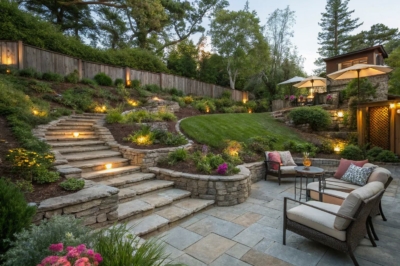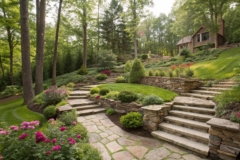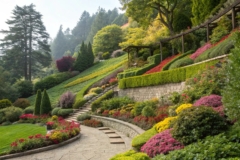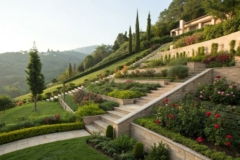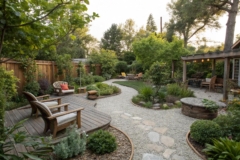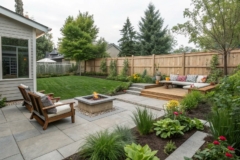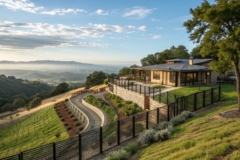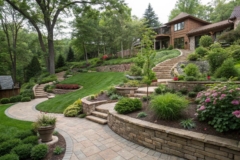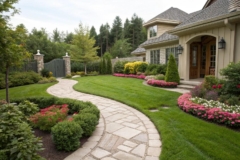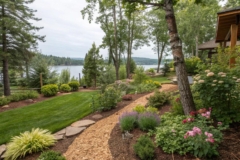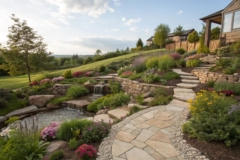1. Herb Spiral
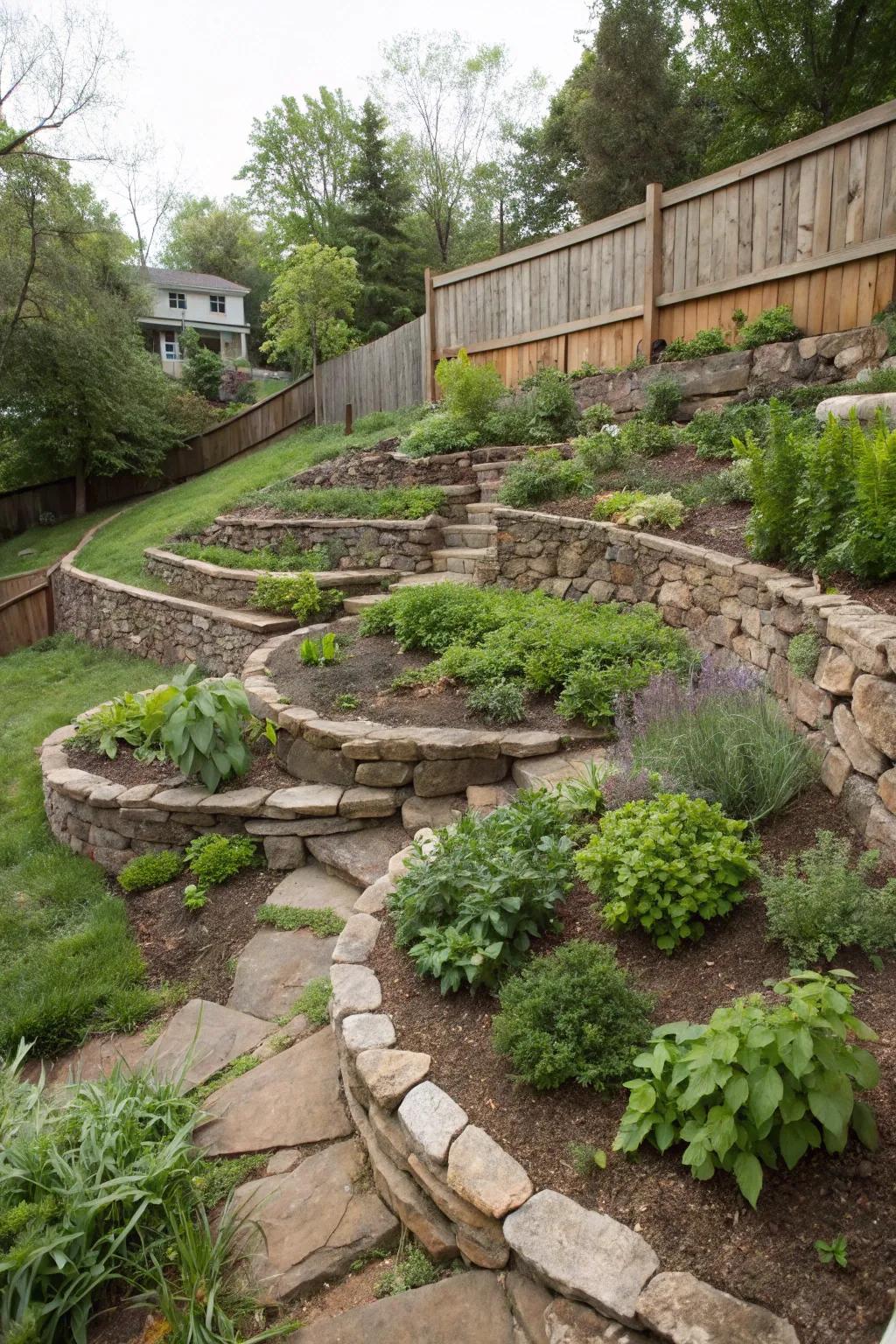
A herb spiral is a unique twist for a sloped garden, offering a compact, vertical herb garden. Building one in my yard was a fun project that now provides fresh herbs right at my fingertips.
Consider these options:
- Garden Stone Kit: Create a durable, beautiful spiral structure with this easy-to-use garden stone kit.
- Herb Seed Variety Pack: Start your herb garden with a diverse range of seeds, perfect for culinary adventures.
- Compost Soil Mix: Enhance your herbs’ growth with this nutrient-rich compost soil mix, ideal for herb spirals.
2. Layered Planting Beds
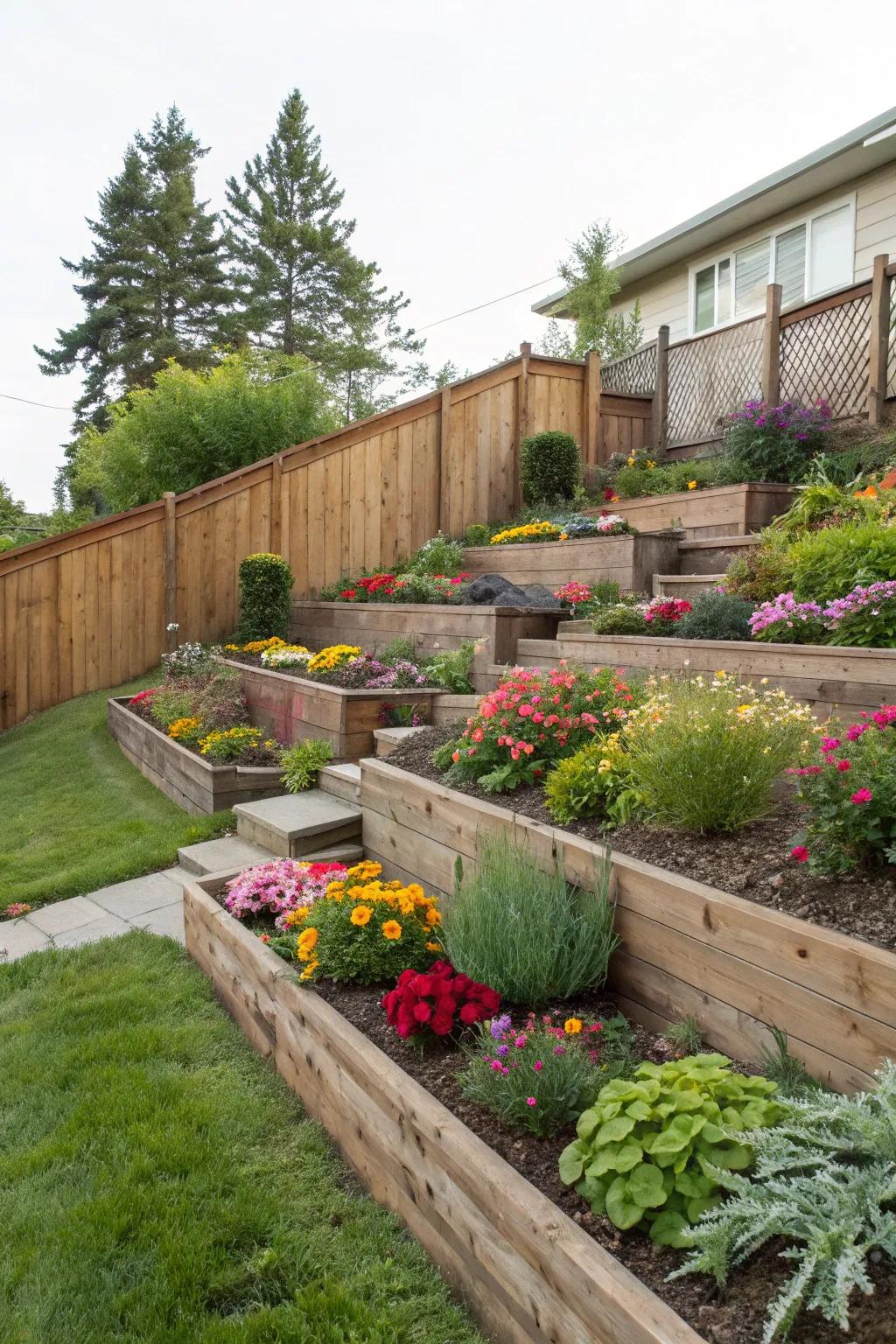
Layered planting beds can turn a slope into a colorful tapestry of flowers and greenery. In my own garden, I mix perennials and annuals for year-round interest.
Explore these options:
- Stackable Garden Planter Boxes: Enhance your slope with stylish, modular planter boxes for a vibrant, layered garden.
- Perennial Flower Seed Mix: Plant a colorful mix of perennials for continuous blooms throughout the seasons.
- Fast-Draining Potting Soil: Use well-draining soil to support healthy root systems and lush, vibrant growth.
3. Cozy Seating Areas

Building a cozy seating area on a slope can create a perfect outdoor hangout spot. I love using reclaimed wood for seating that blends with my garden’s natural vibe.
Items that may come in handy:
- Reclaimed Wood Outdoor Furniture Set: Discover rustic charm with a durable, eco-friendly seating set, perfect for your sloped backyard.
- Outdoor Weather-Resistant Throw Pillows: Add a splash of color and comfort with weather-resistant cushions designed for outdoor leisure.
- Solar-Powered Garden Lights: Enhance evening ambiance with eco-friendly solar lights for your cozy garden seating area.
4. Strategic Lighting
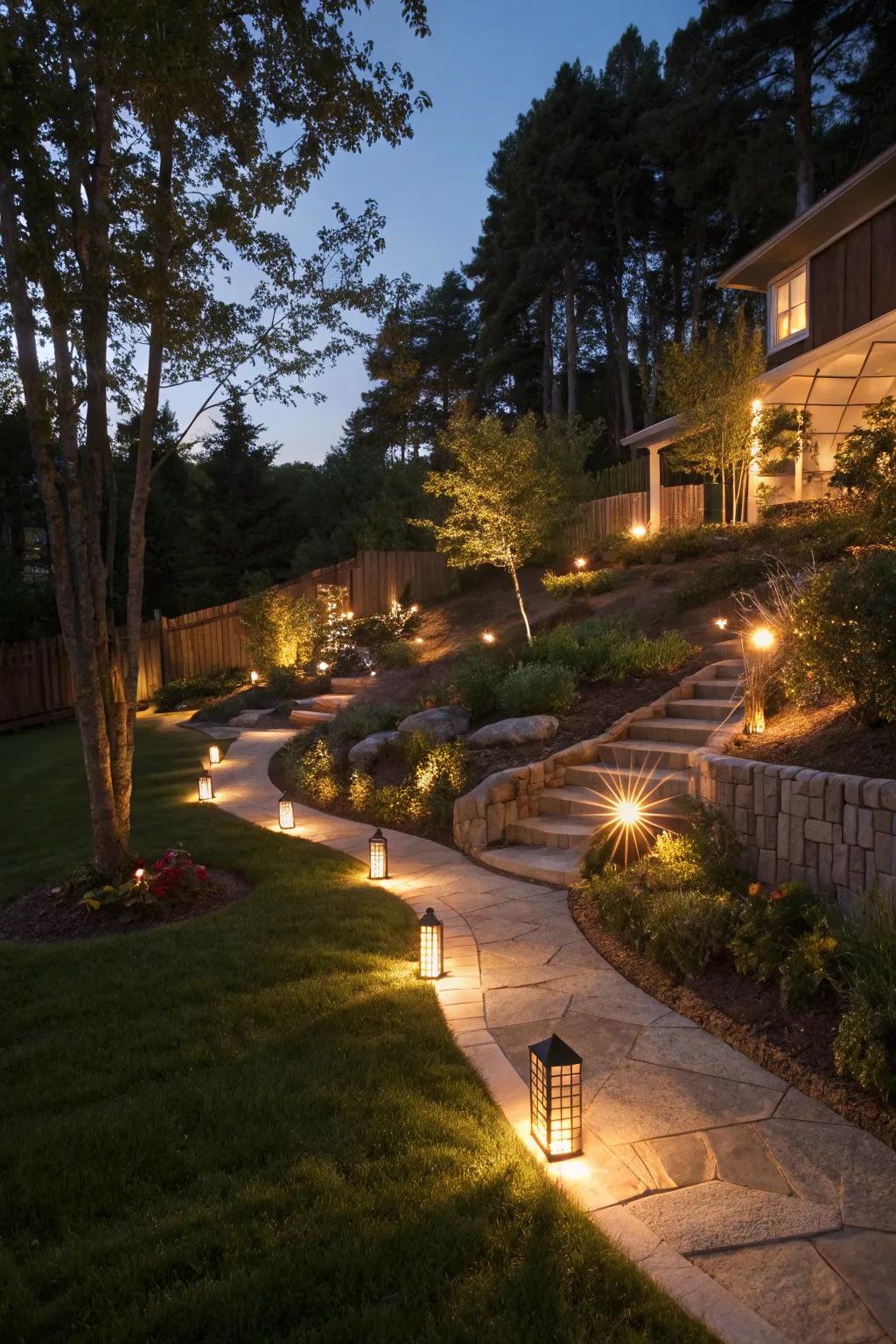
Strategic outdoor lighting can highlight the beauty of your sloped garden after dark. I enjoy using solar lights to illuminate paths and create a magical nighttime atmosphere.
Possibly helpful picks:
- Solar Pathway Lights: Transform your sloped garden with eco-friendly solar pathway lights for a dreamy evening ambiance.
- LED Landscape Spotlights: Enhance key features of your garden with adjustable LED spotlights for stunning night displays.
- Decorative Lantern Lights: Add charm and warmth to pathways using decorative lantern lights, perfect for a cozy atmosphere.
5. Terraced Gardens
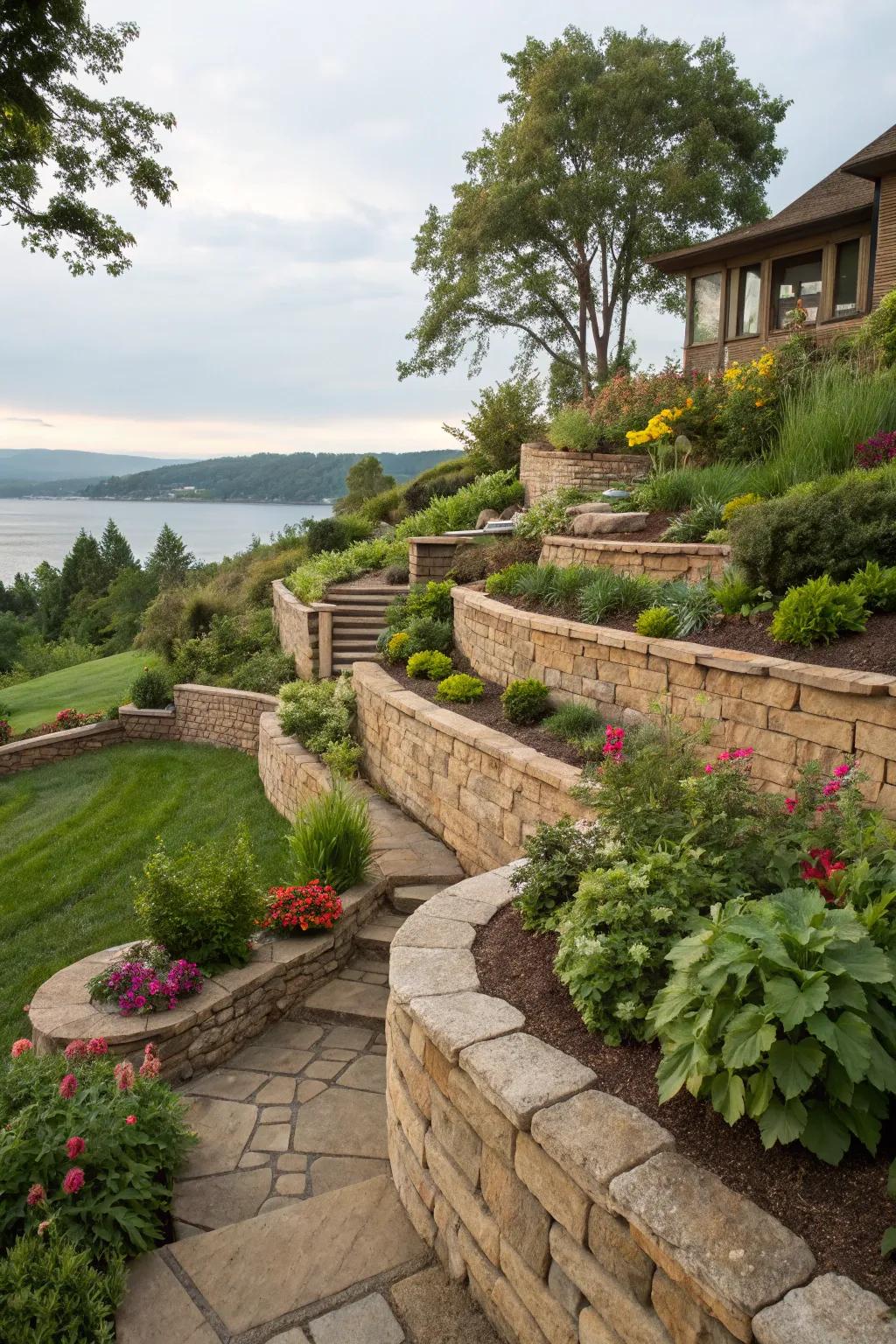
Creating terraced gardens is like giving your slope a stylish makeover with functional flat planting areas. I’ve found that using natural stone for retaining walls adds a rustic charm that blends beautifully with my garden.
A few choices to try:
- Natural Stone Retaining Wall Blocks: Enhance your garden’s rustic charm with durable, natural stone retaining wall blocks.
- Heavy-Duty Garden Edging Stakes: Secure your terraced garden structure with reliable, easy-to-install edging stakes.
- Perennial Plant Variety Pack: Add vibrant color to your terraces with a beautiful mix of hardy perennial plants.
6. Stone Staircases
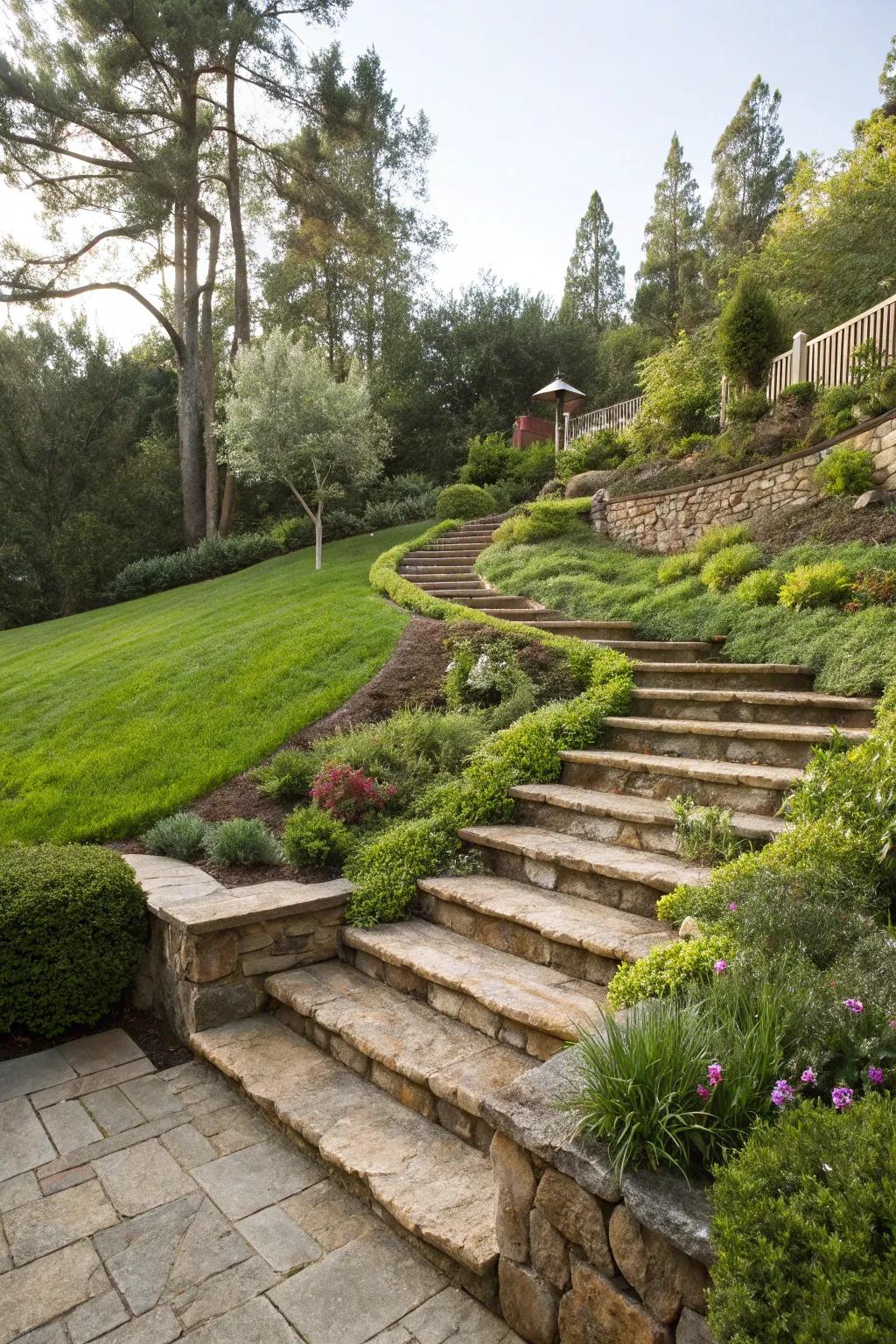
Stone staircases not only make a sloped yard accessible but also add an elegant touch. In my backyard, I’ve used local stone to create steps that lead visitors on a scenic garden tour.
Products that could assist:
- Outdoor Pathway Lighting: Illuminate your stone steps and enhance your garden ambiance with stylish outdoor pathway lighting.
- Landscape Fabric and Pins: Prevent soil erosion and maintain your garden’s pristine look with durable landscape fabric and pins.
- Stone Sealer: Protect your stone steps from weather damage and enhance their natural beauty with a quality stone sealer.
7. Chic Pathways
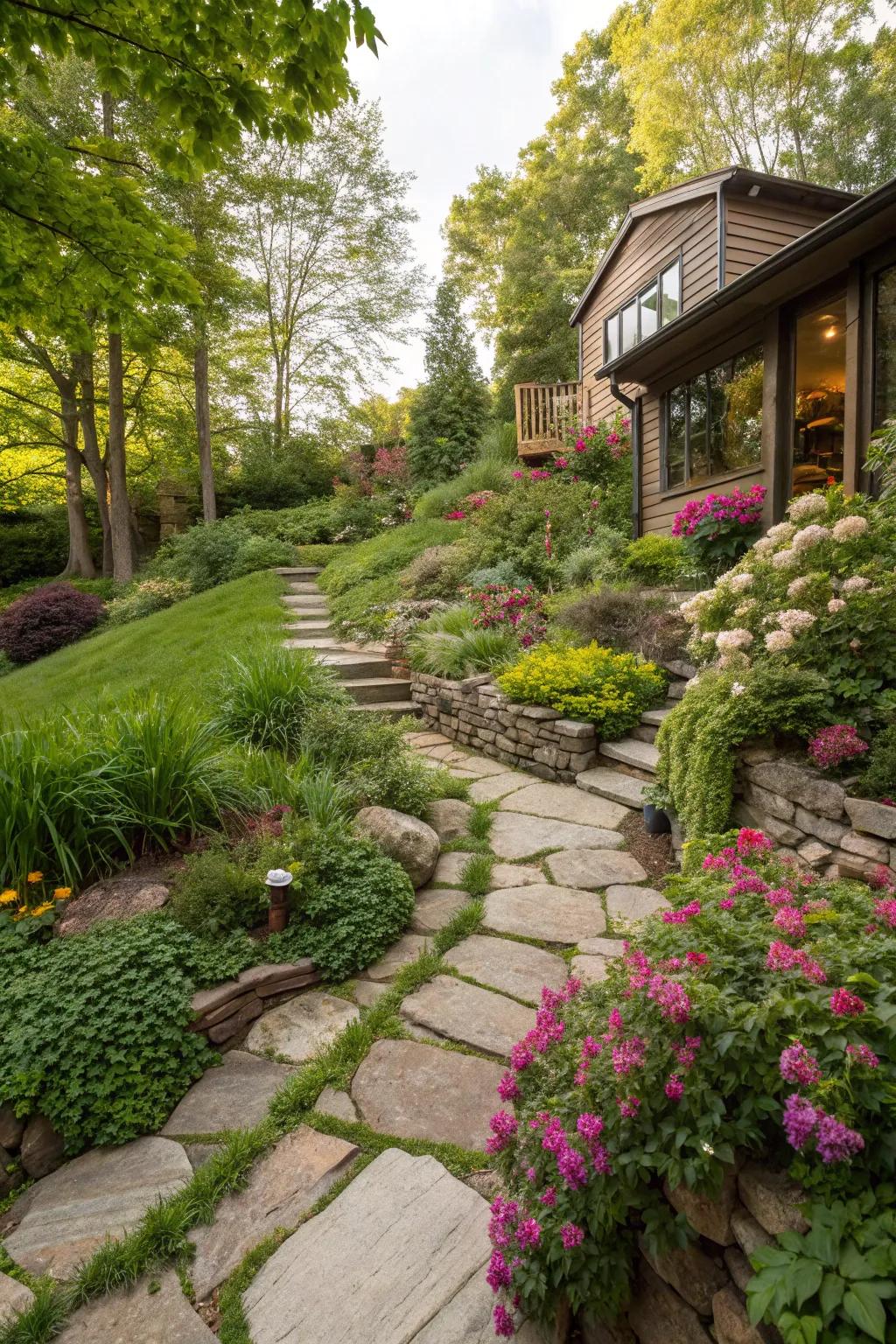
Using stepping stones or pavers to create pathways through a sloped garden can be both functional and stylish. I love the way they lead guests on a winding journey through my backyard.
These products might be useful:
- Natural Stone Stepping Stones: Enhance your garden with durable natural stone stepping stones for a chic, elegant look.
- Garden Pathway Pavers: Create beautiful garden pathways using versatile and stylish garden pavers for a polished finish.
- Solar Pathway Lights: Illuminate your pathways elegantly with energy-efficient solar lights, enhancing nighttime safety and beauty.
8. Vertical Vegetable Garden
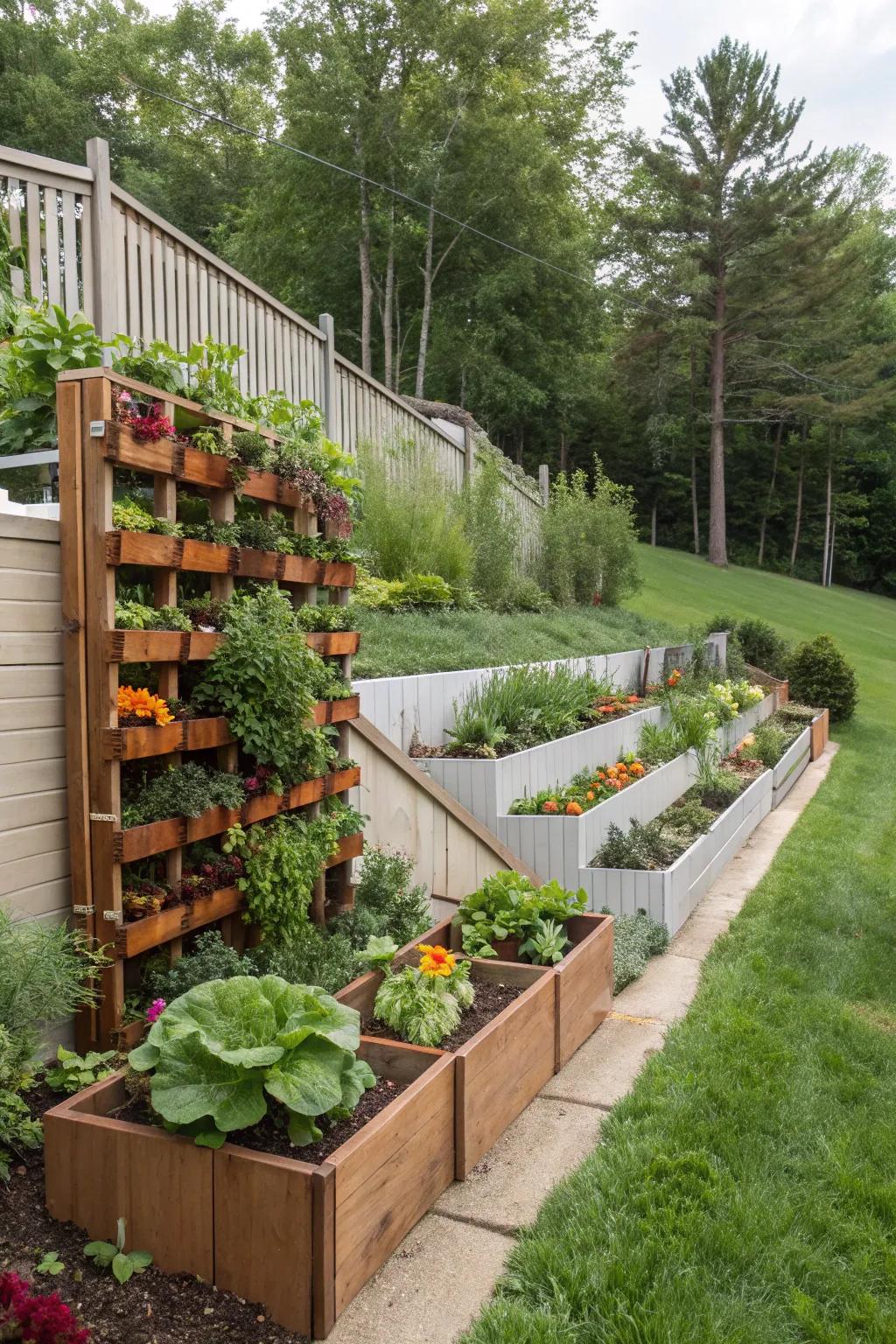
A vertical vegetable garden on a slope maximizes space and yields fresh produce. I use stacked planters to grow everything from tomatoes to herbs, right on my hillside.
Useful items to consider:
- Stackable Planter Set: Maximize space with stackable planters, perfect for growing herbs and vegetables on slopes.
- Wall-Mounted Vertical Garden Kit: Optimize your sloped yard with wall-mounted kits, ideal for vertical gardening.
- Self-Watering Plant Containers: Simplify maintenance with self-watering containers, keeping your plants hydrated efficiently.
9. Fire Pit Wonder
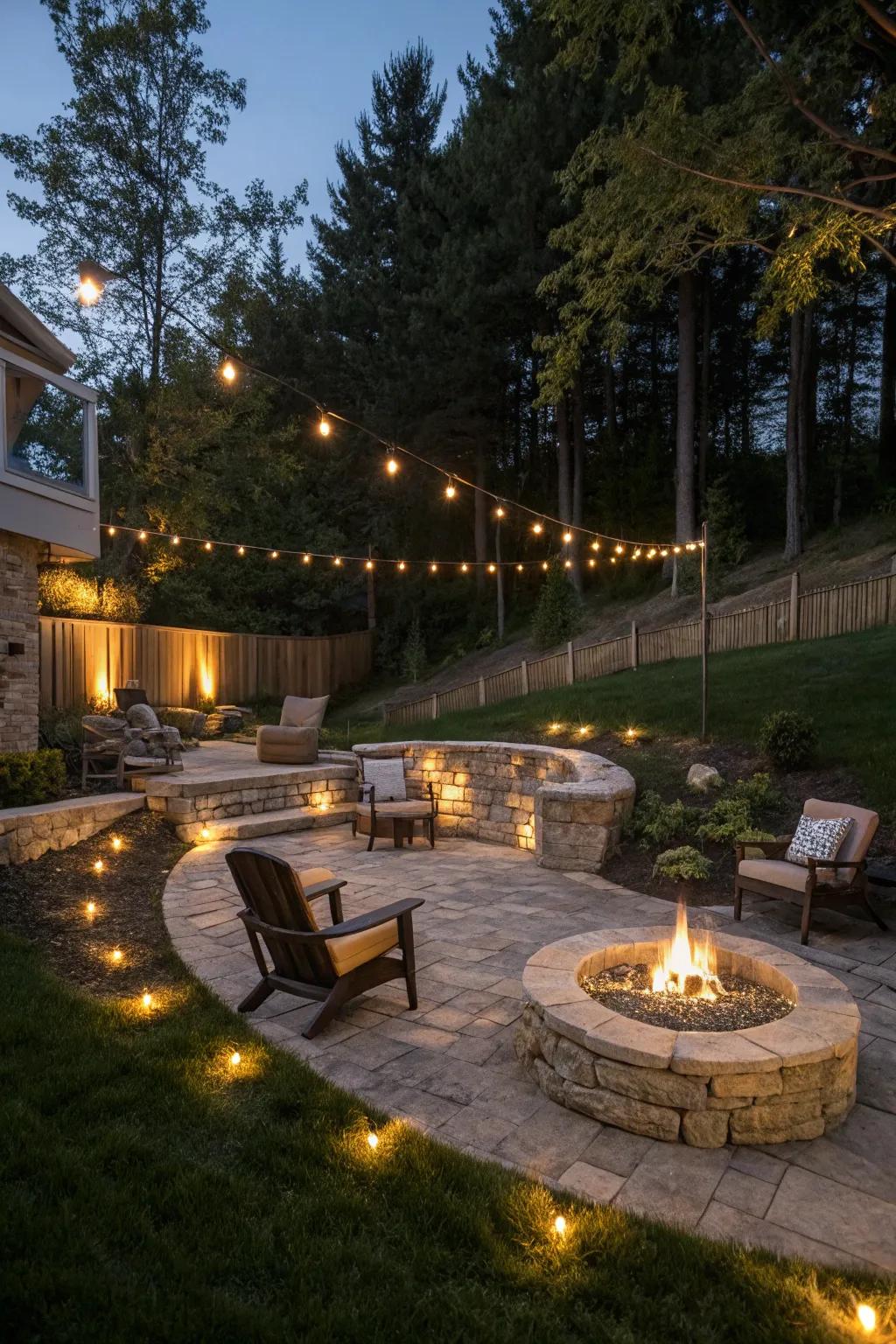
Imagine roasting marshmallows in a fire pit nestled into your slope. I’ve found that a small, stone fire pit creates a warm gathering spot that’s perfect for chilly Austin nights.
A few things you might like:
- Stone Fire Pit: Create a cozy ambiance with a durable stone fire pit, perfect for chilly nights outdoors.
- Outdoor String Lights: Enhance your backyard with enchanting string lights, adding a magical glow to your evenings.
- Adirondack Chairs: Relax comfortably with Adirondack chairs, offering style and durability for your outdoor gatherings.
10. Art Installation
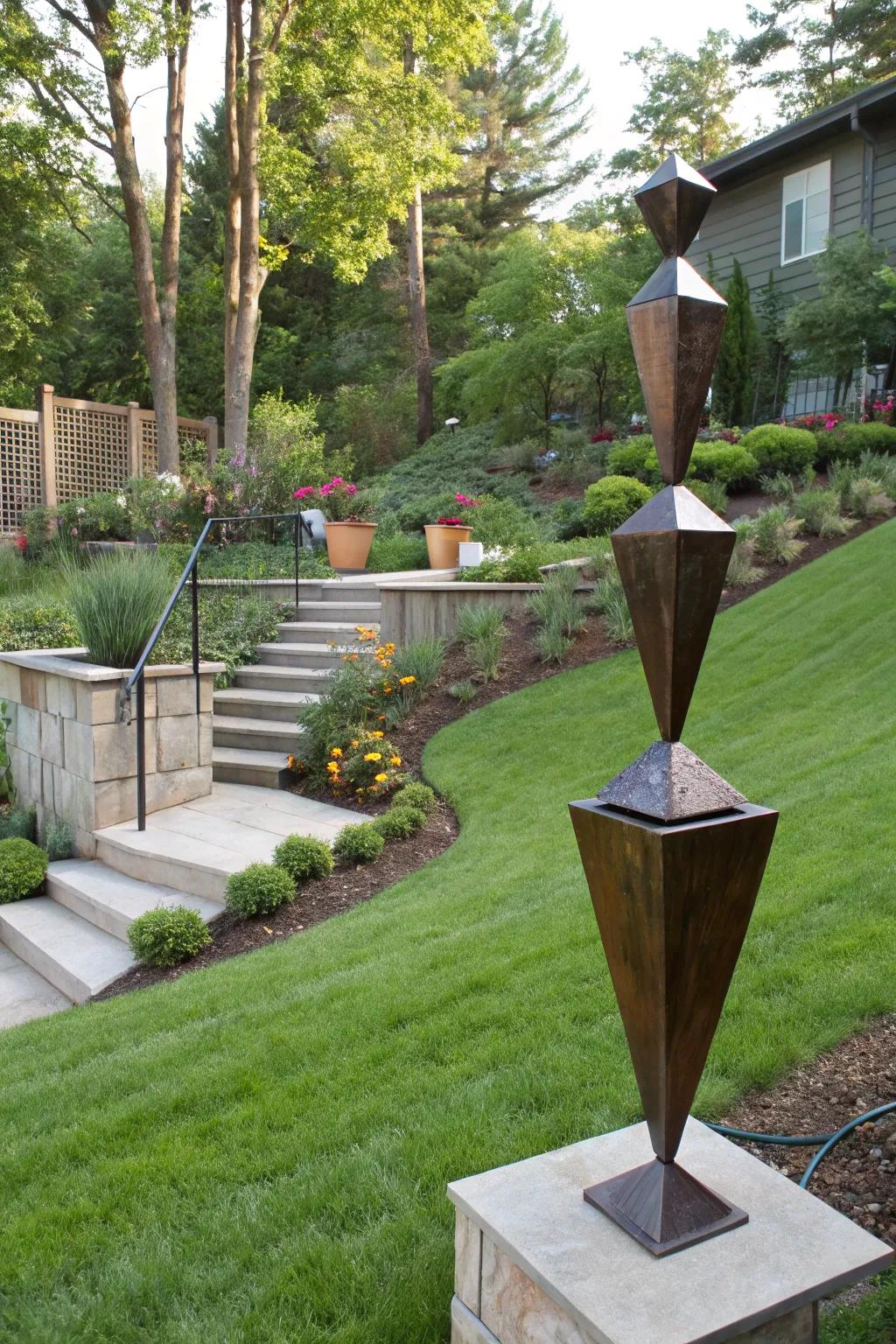
Add an art installation to your slope for a personal touch and visual interest. I installed a recycled metal sculpture that doubles as a conversation starter.
Check if these fit your needs:
- Outdoor Metal Sculpture: Enhance your garden with an elegant metal sculpture that sparks conversation and adds character.
- Recycled Metal Art Statue: Invite eco-friendly charm with a recycled metal art statue, perfect for creative garden accents.
- Garden Art Installation Kit: Complete your outdoor space with a versatile garden art kit for personalized artistic flair.
11. Garden Nooks
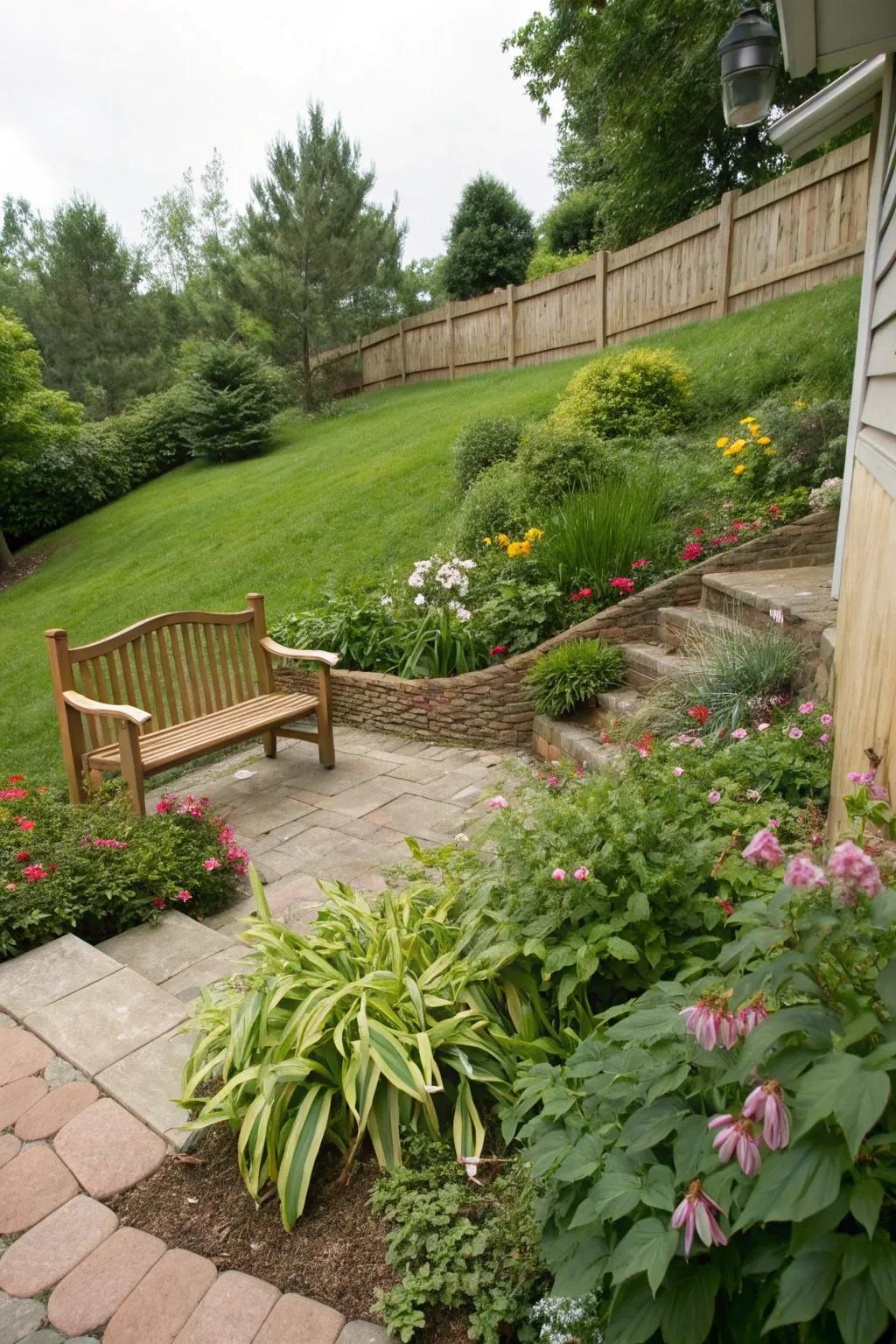
Create hidden nooks within your slope for quiet reflection or reading. I carved out a small bench area where I can enjoy a book surrounded by nature’s serenity.
A few suggestions:
- Outdoor Wooden Bench: Enhance your garden nook with a stylish wooden bench for serene reading and relaxation moments.
- Solar Garden Lights: Illuminate your garden nook with eco-friendly solar lights for a peaceful evening ambiance.
- Decorative Outdoor Cushions: Add comfort and color to your seating area with weather-resistant outdoor cushions.
12. Birdwatcher’s Paradise
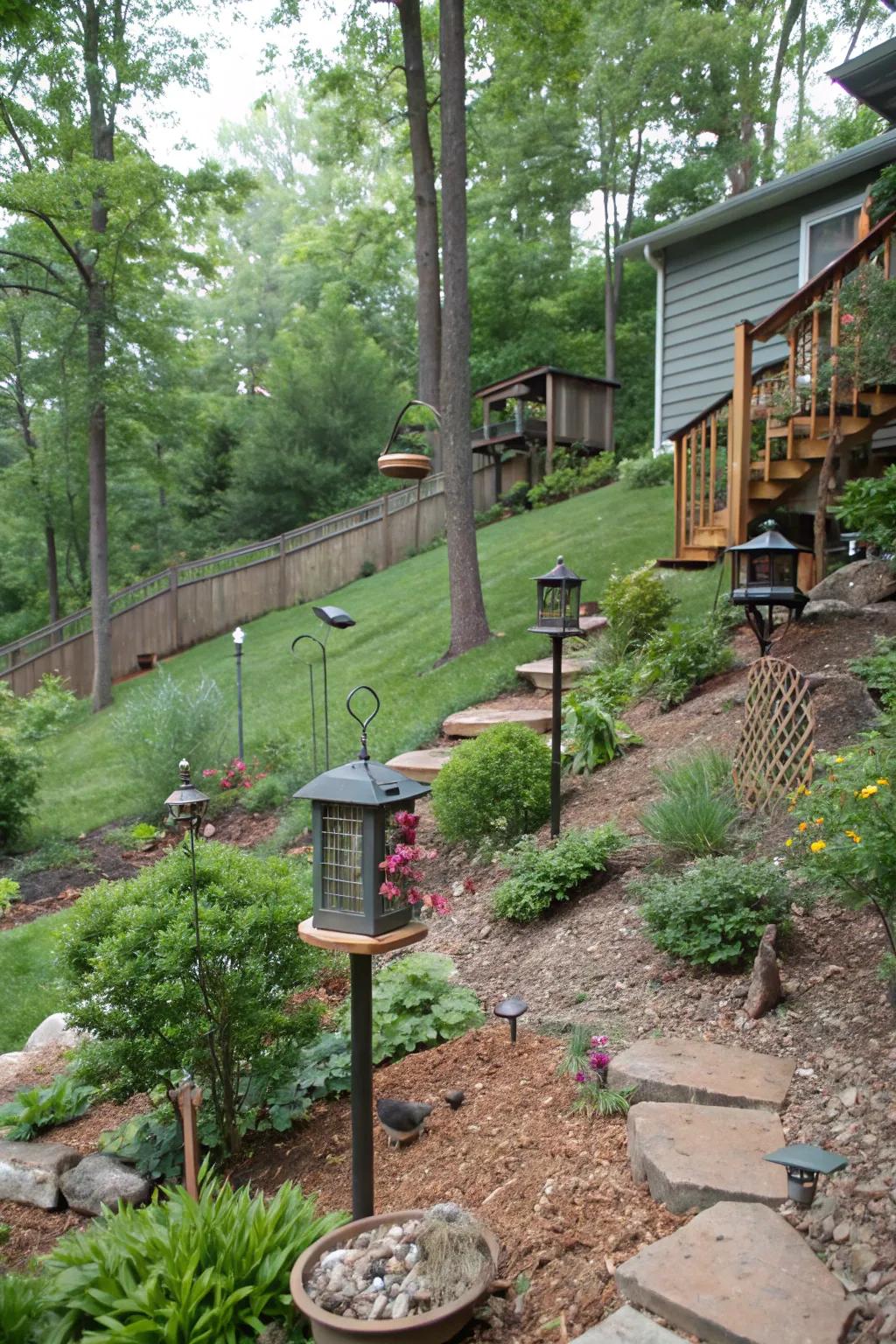
A slope can be the ideal spot for a birdwatcher’s paradise with feeders and native plants. I love waking up to the morning chorus of chirping birds in my garden.
Give these a look:
- Bird Feeding Station Kit: Enhance your garden’s allure with this bird feeding station. Enjoy watching various species visit daily.
- Native Wildflower Seed Mix: Cultivate a vibrant garden with native plants that attract and nourish local birdlife beautifully.
- Decorative Birdhouses: Add charm to your backyard with these lovely birdhouses, ideal for nesting and shelter.
13. Mossy Steps
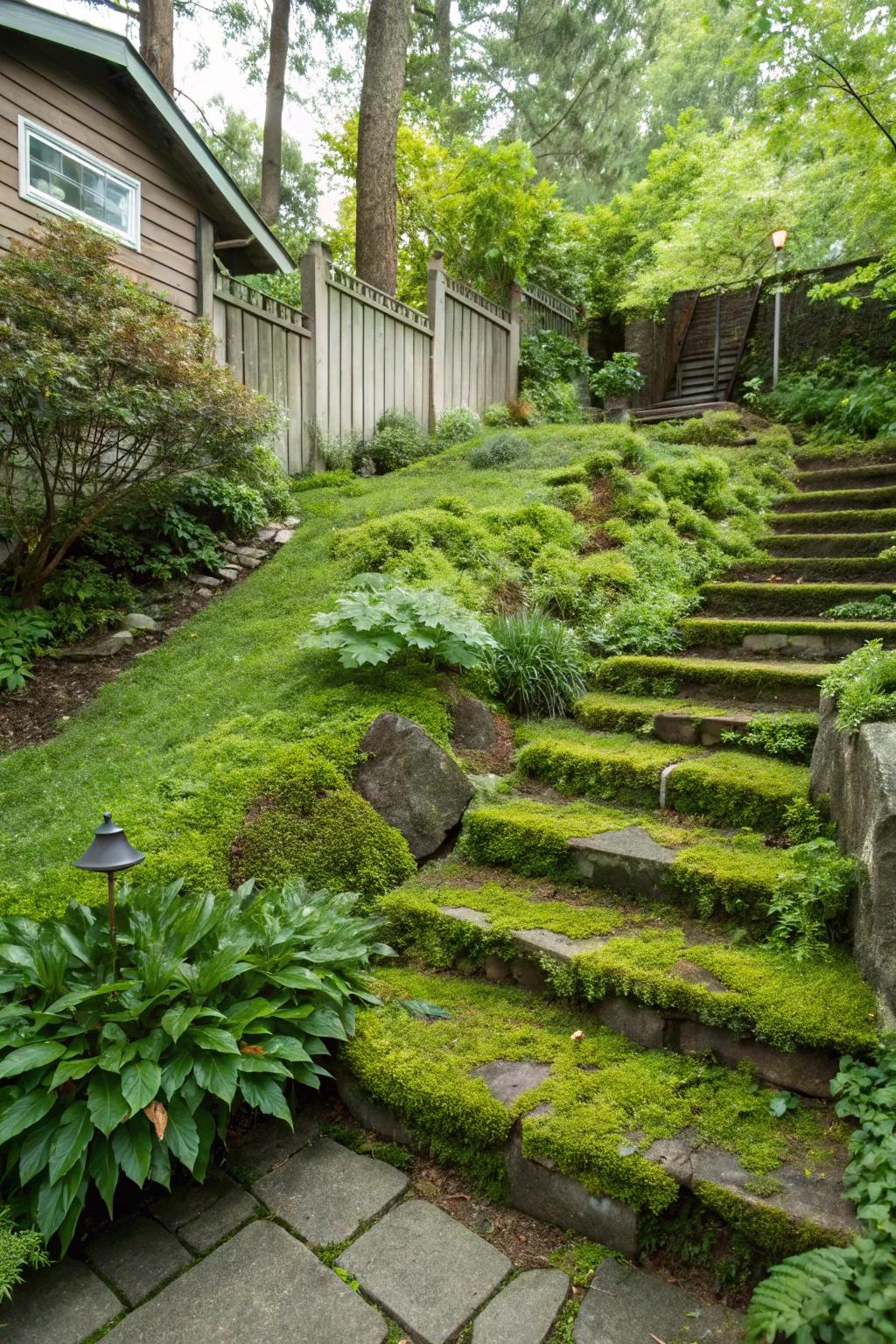
Integrate moss-covered steps into your slope for a magical, fairy-tale feel. These steps in my backyard look like they’ve grown naturally over time.
You might give these a try:
- Moss Ground Cover Seeds: Easily grow lush, green moss for your steps to create a natural, enchanting look.
- Landscape Fabric Pins: Secure moss in place on inclined surfaces with durable landscape fabric pins for stability.
- Garden Pathway Lights: Illuminate your mossy steps with elegant garden lights for a magical evening glow.
14. Waterfall Dreams

A gentle waterfall cascading down a slope adds tranquility and charm. I incorporated a small waterfall in my garden, using rocks to guide the flow and enhance the natural feel.
These products might help:
- Outdoor Waterfall Pump Kit: Ensure smooth water flow in your garden waterfall with this efficient pump kit.
- Natural Landscaping Rocks: Enhance your waterfall’s natural look with these beautifully crafted landscaping rocks.
- Solar-Powered Garden Lights: Illuminate your garden waterfall at night with eco-friendly, solar-powered garden lights.
15. Rock Garden
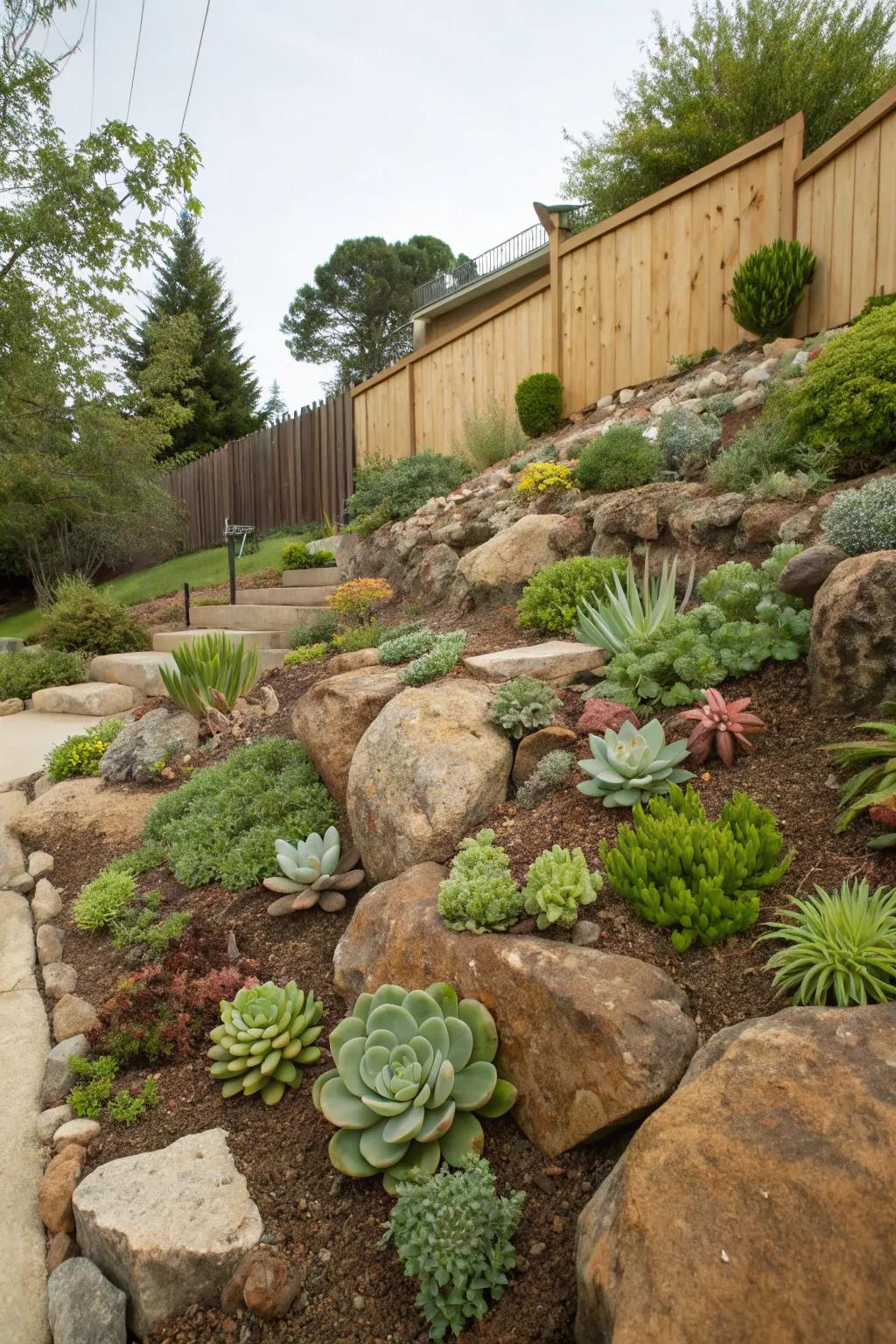
A rock garden can turn a barren slope into a rugged, low-maintenance landscape. My rock garden features succulents and alpine plants that thrive in the Texas heat.
A few helpful options:
- Succulent Plant Collection: Add vibrant texture to your rock garden with a diverse mix of hardy succulents.
- Garden Landscape Rocks: Enhance your landscape with durable rocks to create natural elegance and control erosion.
- Alpine Plant Seeds: Introduce low-maintenance alpine plants to enjoy year-round greenery and robust beauty.
16. Zen Meditation Space
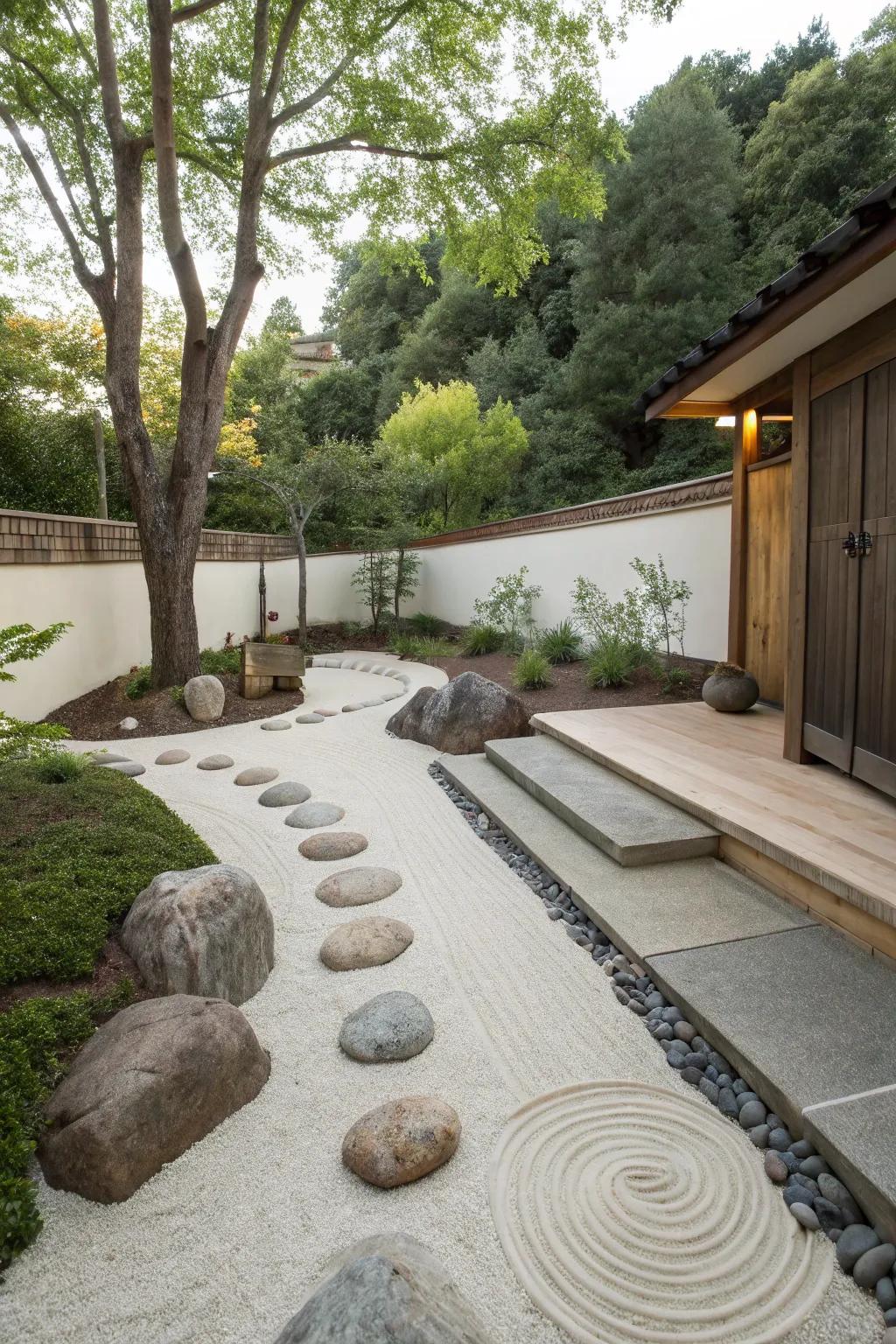
Create a Zen-inspired retreat on your slope with a simple meditation space. I added a few sand rakes and strategically placed stones for a calming oasis.
Check these products out:
- Sand Rake Set for Zen Garden: Enhance tranquility in your meditation space by shaping sand patterns with this essential rake set.
- Meditation Cushion: Elevate your meditation sessions with comfort using a supportive and serene meditation cushion.
- Outdoor Solar Lanterns: Illuminate your Zen retreat with eco-friendly lanterns, enhancing evening tranquility with soft lighting.
17. Low-Maintenance Plants
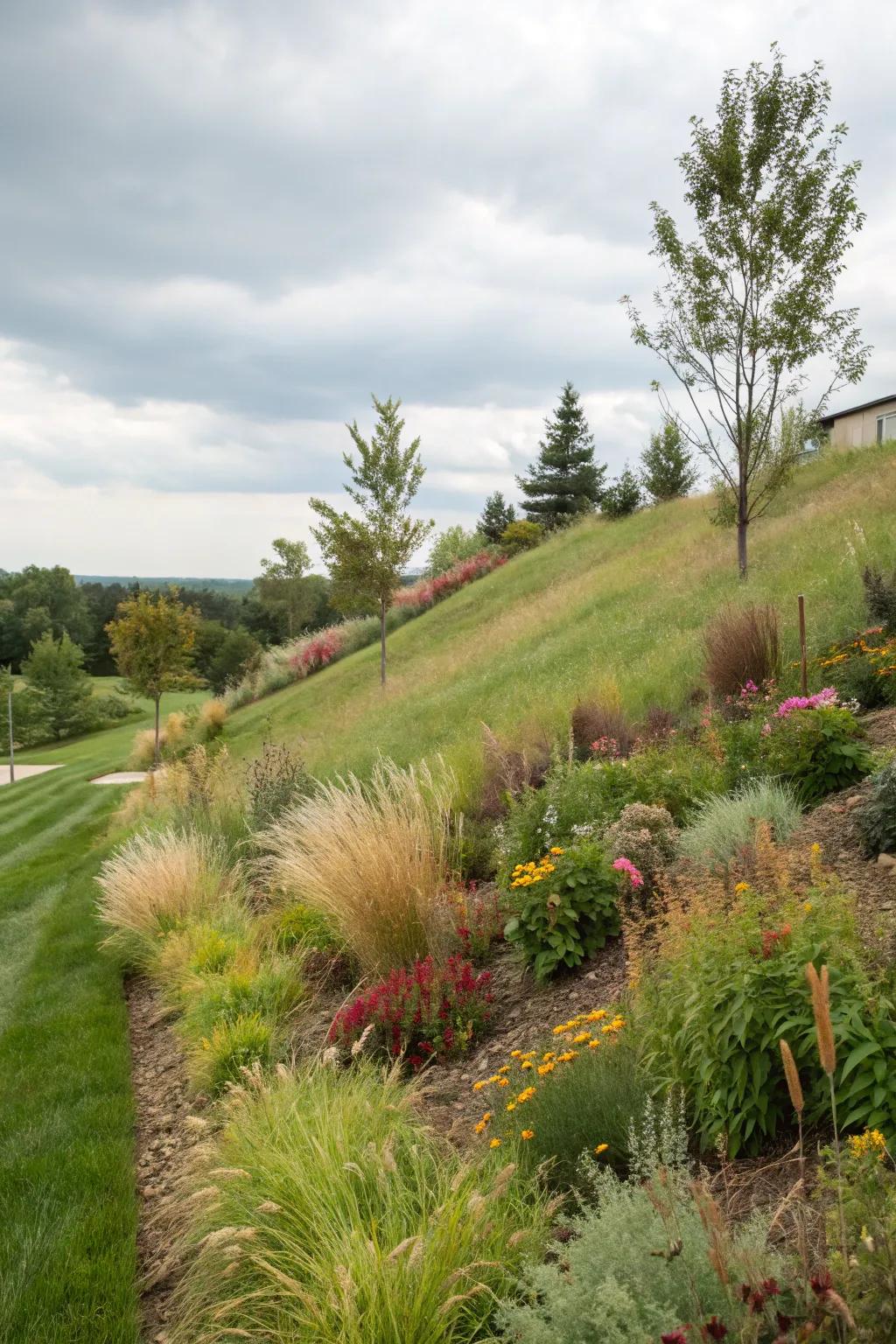
Incorporating low-maintenance plants like hardy grasses and perennials can make caring for a sloped garden easier. In Austin, drought-resistant plants have been a lifesaver for me.
Some handy options:
- Drought-Resistant Perennial Seed Mix: Transform your slope with these easy-care perennials that thrive in drought conditions.
- Decorative Hardy Grass Seeds: Add texture and elegance to your landscape with these resilient, low-maintenance grasses.
- Automatic Drip Irrigation Kit: Ensure consistent watering for your plants with this efficient, easy-to-install drip system.
